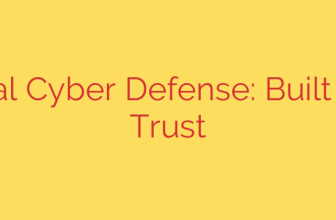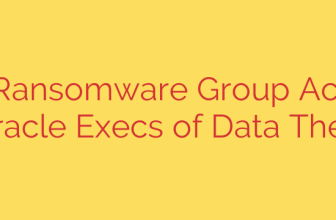
Red Hat GitHub Repositories Targeted in Sophisticated Cyberattack
In a significant development for the open-source community, Red Hat has confirmed a security incident involving unauthorized access to several of its GitHub repositories. The breach was carried out by an external threat actor and highlights the persistent and evolving threats facing even the most well-regarded technology companies.
Upon discovering the intrusion, Red Hat’s security teams took immediate action to contain the threat and launch a comprehensive investigation into the scope and impact of the attack.
What We Know About the Security Incident
The incident involved a successful attempt by cybercriminals to gain access to systems within Red Hat’s GitHub organizations. While the investigation is ongoing, initial analysis points to a targeted attack focused on specific project repositories rather than a widespread compromise of Red Hat’s entire infrastructure.
Key details of the breach include:
- Unauthorized Access Confirmed: Red Hat detected and verified that an unauthorized third party gained access to a limited number of its code repositories.
- Rapid Incident Response: The company’s security protocols were activated promptly, which involved securing the affected systems, revoking credentials, and initiating a forensic analysis to understand the attacker’s methods and goals.
- Collaboration with GitHub: Red Hat is working closely with GitHub’s security teams to investigate the breach, analyze access logs, and ensure the integrity of its projects moving forward.
The Anatomy of the Attack: Compromised Credentials
Early findings suggest that the attackers gained their initial foothold by using compromised developer credentials. This method remains one of the most common and effective vectors for cyberattacks, bypassing many perimeter security measures by impersonating a legitimate user.
This incident serves as a critical reminder that the human element is often the weakest link in the security chain. It underscores that the attack was likely not the result of a vulnerability in Red Hat’s software or GitHub’s platform itself, but rather a successful attack on an individual’s access credentials.
Impact and Scope: Was Source Code Altered?
The primary concern in any repository breach is the potential for a software supply chain attack, where malicious code is secretly injected into a project and then distributed to downstream users.
Fortunately, Red Hat’s swift response appears to have mitigated the most severe risks. The company has stated that its investigation has found no evidence of malicious modifications being made to its source code. Furthermore, there is currently no indication that any customer data was compromised or that the integrity of its software builds, like Red Hat Enterprise Linux (RHEL), was affected.
The primary goal of the attackers may have been reconnaissance—gaining insights into Red Hat’s development processes or stealing proprietary information for future attacks.
Protecting Your Own Development Environment: Key Security Takeaways
This breach offers valuable lessons for development teams, system administrators, and organizations of all sizes. Protecting source code repositories is paramount to maintaining software integrity and customer trust. Here are actionable steps you can take to enhance your security posture:
- Mandate Multi-Factor Authentication (MFA): Enforce MFA across all developer and administrator accounts, especially for services like GitHub, GitLab, and Bitbucket. This is the single most effective defense against credential theft.
- Implement the Principle of Least Privilege: Ensure that developers only have access to the specific repositories and permissions they absolutely need to perform their jobs. Avoid using shared accounts or granting overly broad administrative rights.
- Regularly Audit Access and Permissions: Periodically review who has access to your critical repositories. Remove stale accounts and downgrade permissions for users whose roles have changed.
- Monitor for Anomalous Activity: Utilize logging and monitoring tools to detect unusual behavior, such as logins from unexpected locations, large-scale code clones, or permission changes made outside of normal business hours.
- Secure Commits: Encourage or enforce the use of signed commits (e.g., with GPG keys) to verify the identity of the person contributing code and ensure its authenticity.
As threat actors increasingly target the software supply chain, the responsibility falls on every organization to adopt a proactive and defense-in-depth security strategy. The Red Hat incident is not an isolated event but a clear signal of a broader trend that demands constant vigilance and robust security practices.
Source: https://securityaffairs.com/182866/data-breach/cybercrime-group-claims-to-have-breached-red-hat-s-private-github-repositories.html








